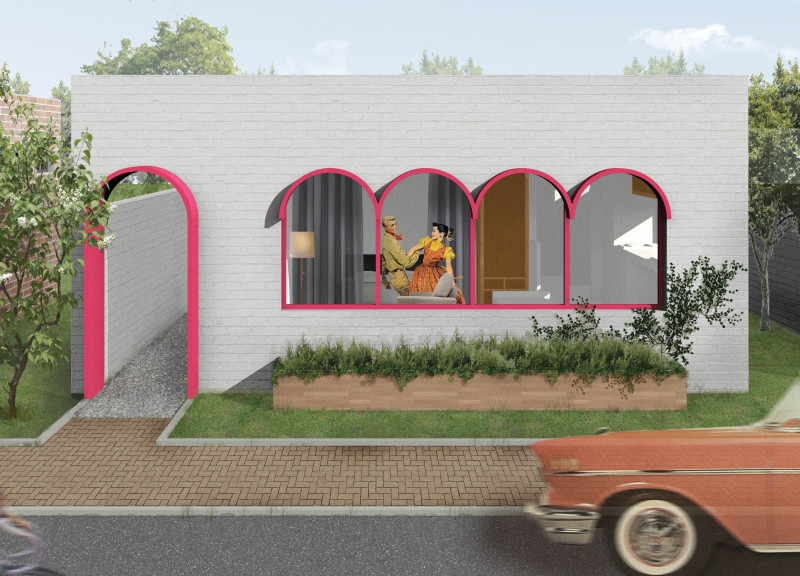5 key facts about this project
In a future characterized by rapid digital change and shifting societal expectations, the design for Albert and Jenny in 2069 addresses essential questions about identity and privacy. Set against a backdrop where personal expression often contrasts with curated public images, the architecture utilizes a concept that contrasts a showroom with a practical storage space. This thoughtful approach engages with the complexities of modern living while creating an intimate yet flexible environment.
Architectural Concept
The design serves a dual purpose; it functions as both an attractive showroom and a practical storeroom. This arrangement reflects the dual nature of our lives today. It captures how people often showcase a polished version of themselves, while their private lives may present a different reality. By exploring these themes, the design highlights the ongoing dialogue around self-presentation and personal space.
Spatial Arrangement
At the heart of the home is a compact core or reservoir that holds significant personal belongings and essential items. This aligns with a minimalist philosophy, encouraging individuals to keep only what is meaningful. The layout includes two distinct areas: a main core for living functions and a separate kitchen core. This organization allows for smooth movement throughout the space. It is designed to adapt, reflecting the possible future of microhomes.
Facade and Privacy
The house incorporates arches in its facade, creating a transitional area between public and private spaces. This design element plays a crucial role in enhancing intimacy and privacy. Inhabitants can move between social interaction and solitude with ease. Features such as doors and curtains allow Albert and Jenny to control their exposure to the outside world. This careful separation of spaces demonstrates a balance between functionality and personal comfort.
Sustainability Features
A strong emphasis is placed on sustainability and self-sufficiency within the project. The integration of solar panels and water collection systems promotes environmental responsibility and ensures that the home can operate independently. This strategy aligns with modern trends in residential design, underscoring the importance of ecological considerations in future living.
The arrangement of spaces, along with thoughtfully designed architectural elements, creates an environment that invites daily interactions and reflections on personal life. The balance of public display and private refuge is expressed through the layout, showcasing a comprehensive approach to living in the future.






















































